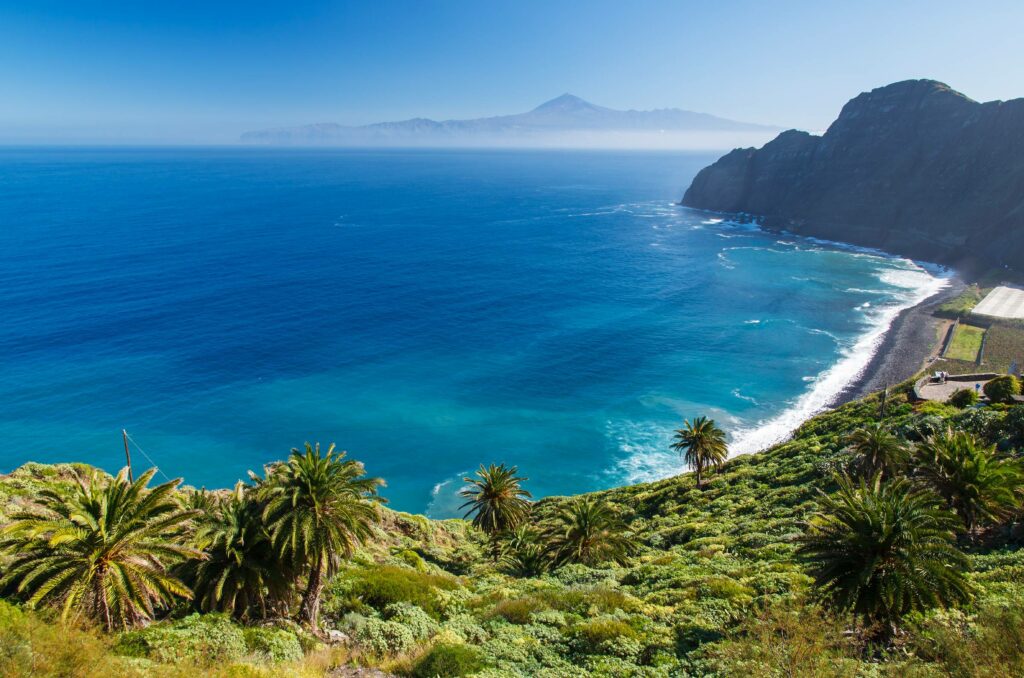The Spanish Canary Islands, located just off the coast of West Africa, offer some of the best sailing conditions in the world. This beautiful archipelago is made up of eight main islands, seven of which are larger, and one smaller. Each island boasts breathtaking landscapes, volcanic terrain, and sandy beaches, making the Canary Islands an ideal sailing destination year-round. So, if you live in an area where winter months are cold and would like to visit a warm European country – visit the Canary Islands and see why they are known as ‘the islands of eternal spring‘! The Canary islands weather is perfect to set sail in all seasons. All seven major islands are within a day’s sail of each other, making it easy to explore multiple destinations in one trip.
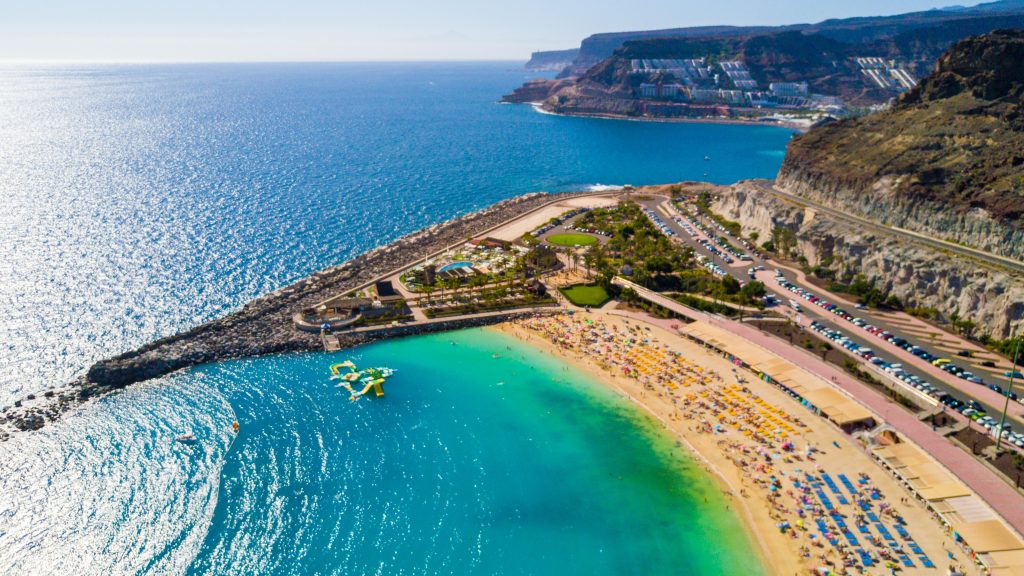
When to Sail the Canary Islands
The Canary Islands consist of seven main islands: Lanzarote, Fuerteventura, Gran Canaria, Tenerife, La Gomera, La Palma and El Hierro going from east to west. Tenerife is the largest island, while the second-largest island is Gran Canaria. Despite their proximity, each island features unique climates and landscapes, mainly due to the influence of the Canary current.
and set sail for the islands of eternal spring…
Comparing the other countries on the same latitude, the Canary Islands weather is much more enjoyable and cooler, without the heat extremes. Summers are warm with an average temperature of 24 °C, while Canary winters are mild with an average temperature of 17 °C. The average temperature throughout the year in Gran Canaria is 21.1 °C. On the other hand, weather is the warmest from May to December while during the rest of the year, it is around 19°C. With more than 3,000 hours of sunshine annually, the Canary Islands easily surpass many other European sailing destinations in terms of daylight hours.
The islands provide excellent sailing conditions throughout the year. The Canary Islands weather is gentle, and the landscapes are impressive. There are a lot of white sandy beaches, but there are also some black sandy beaches due to the volcanic soil of several islands. December and February are the two most crowded months of the year flooded with tourists who would like to avoid winter conditions at home. So, if you enjoy peace and quiet, we suggest visiting the Islands in other months of the year.
Which Canary Island Has the Best Weather?
To make your choice a bit easier, considering the statistics regarding the temperature from MetOffice, if you would like to visit the Canary Islands in the summer months, from April to September, the warmest Canary Island is Tenerife with a peak in August of 29.2°C. Statistically, July, August, and September are the warmest months. Winter months are a couple of degrees cooler. During the winter months, there are occasional wet periods with storms that are not so frequent. So, if you wish to sail from October to March, the peak temperature is in Lanzarote at 26.8°C. In the winter period, the temperature in the islands Hierro and La Palma tends to be slightly lower due to their proximity to the open sea. The islands closer to the African continent are drier and warmer. The Canary Island weather is unique and diverse among islands.
Comparing the North and South of each island, Tenerife has considerable differences regarding the weather. The highest mountain in Spain is here, Mount Teide casting the world’s largest shadow on the sea. In winter, sunny and warm weather is typical for the south, while the north requires wearing a light sweater.
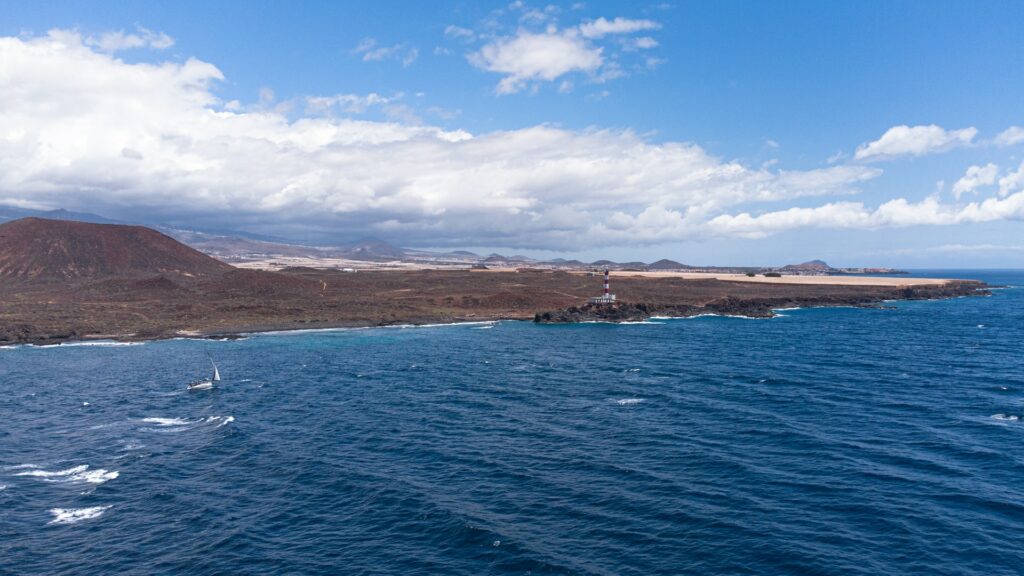
Prevailing Winds in the Canary Islands
Most of the year, trade winds prevail bringing a Force 3-4 from NE so Canary Islands display very clear skies. The trades are strongest in July and prevail in spring and summer. Lanzarote and Fuerteventura, which are the closest to Africa, are also hit by the Scirocco, strong south to southeast wind. Likewise, due to its vicinity to North Africa, those two islands get almost no rain. Moving west, the other islands are greener with a higher possibility of precipitation.
Areas where the wind is channeled in-between islands, the so-called wind acceleration zones, appear in the Canaries. These zones are noted in the pilot books so it is good to prepare yourself with their location because the wind can intensify, at its worst, for near calm to Force 5 within minutes. In normal conditions in the areas, the wind speed accelerates by 10-15 knots. The windiest Canary Island is Fuerteventura due to dry and hot winds from the Sahara Desert.
Tides and Swells in the Canary Islands
Understanding tidal patterns and swells is crucial for smooth Canary Islands sailing. The region experiences two tidal cycles daily, influenced by the Atlantic Ocean, with notable changes around the full moon. These shifts in water levels can impact docking and anchoring decisions, especially in more exposed areas.
Swells in the Canary Islands typically come from the North Atlantic, especially in winter, and are strongest around the northern islands. However, the southern coasts of islands like Tenerife and Gran Canaria often see much calmer conditions. Being mindful of these tides and swells allows for better planning and ensures a more enjoyable Canary Islands sailing.
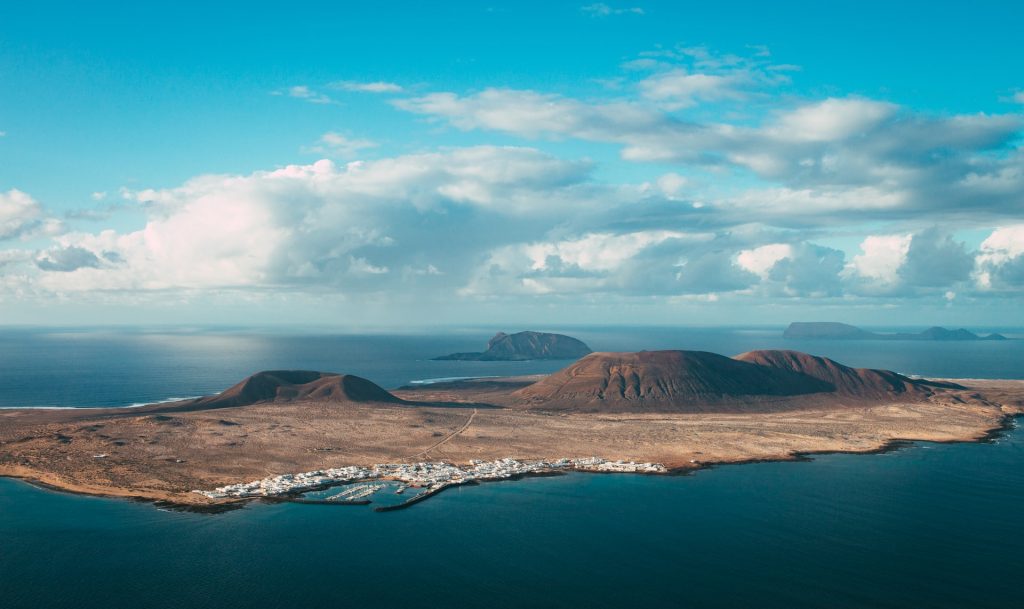
The Canary Islands Sailing Routes
Depending on how much time you would like to spend on the volcanic landscapes, white and black sandy beaches or exploring the cities and charming villages we propose some Canary Islands sailing itineraries. It would be a challenge to visit all islands but still quite a feasible one.
For those who would like to visit one of the two largest islands, we suggest one of the following routes planed on a one-week trip:
Route 1 – All around Tenerife and La Gomera.
- Day 1: Santa Cruz de Tenerife → El Medano (30 NM)
- Day 2: El Medano → San Sebastián de La Gomera (32 NM)
- Day 3: San Sebastián de La Gomera → Los Gigantes (17 NM)
- Day 4: Los Gigantes → San Marcos (19 NM)
- Day 5: San Marcos → Puerto de la Cruz (10 NM)
- Day 6: Puerto de la Cruz → Santa Cruz de Tenerife (36 NM)
- Day 7: Santa Cruz de Tenerife
Route 2 – Exploring Gran Canaria
- Day 1: Pasito Blanco → Puerto Rico de Gran Canaria (5 NM)
- Day 2: Puerto Rico de Gran Canaria → Agaete (25 NM)
- Day 3: Agaete → Las Palmas (20 NM)
- Day 4: Las Palmas → Playa del Hombre (17 NM)
- Day 5: Playa del Hombre → Pozo Izquierdo (12 NM)
- Day 6: Pozo Izquierdo → Pasito Blanco (12 NM)
- Day 7: Pasito Blanco
Available marinas and getting there
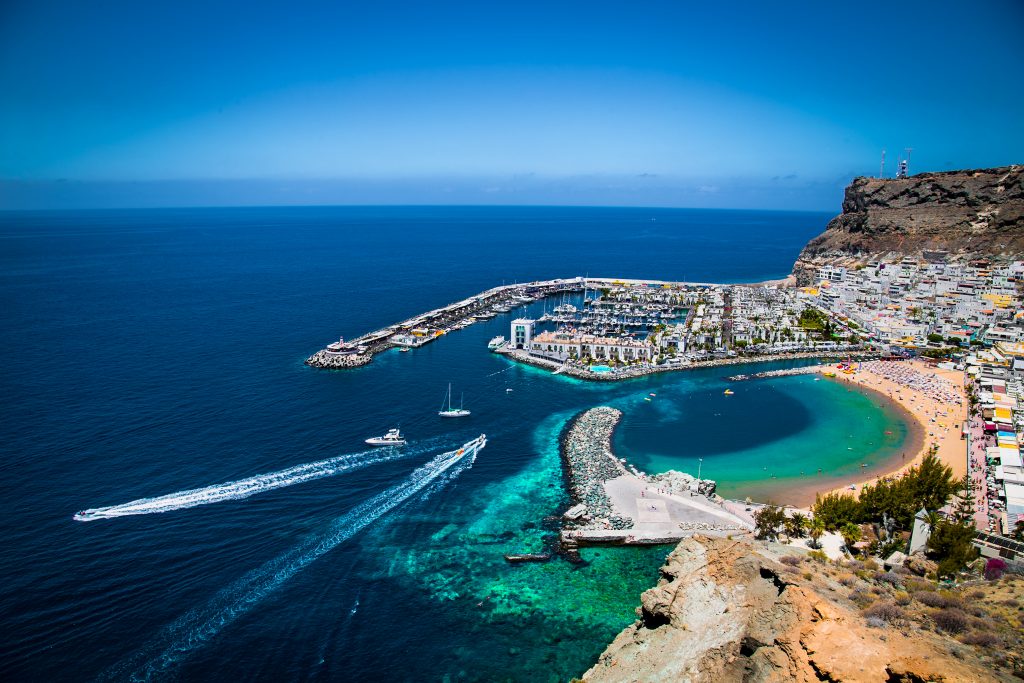
Most marinas are in Tenerife, Gran Canaria and Lanzarote. The two busiest and biggest airports are the Gran Canaria Airport (LPA) and Tenerife South Airport (TFS). From both of these airports, it is easy to access any of the major marinas. There you can choose from a variety of sailing yachts, catamarans, or motor yachts.
Sailing Events and Regattas in the Canary Islands
The Canary Islands are a major hub for sailing events and regattas throughout the year. One of the most renowned events is the Atlantic Rally for Cruisers (ARC), which departs from Gran Canaria in November and ends in Saint Lucia, offering sailors a thrilling transatlantic journey.
Other notable events include the Canary Islands International Regatta, which takes place in several locations across the islands, and local races that celebrate the region’s rich sailing culture. These regattas are a perfect opportunity for sailors to test their skills, enjoy friendly competition, and experience the stunning beauty of the Canary Islands from the water.
Conclusion
The Canary Islands offer unparalleled sailing conditions thanks to their year-round mild climate, diverse landscapes, and perfect sailing routes. Whether you’re navigating through calm waters or exploring more challenging wind zones, the Canary Islands weather is ideal for sailors of all levels. Start planning your Canary Islands sailing adventure today and experience the beauty of these islands firsthand!

